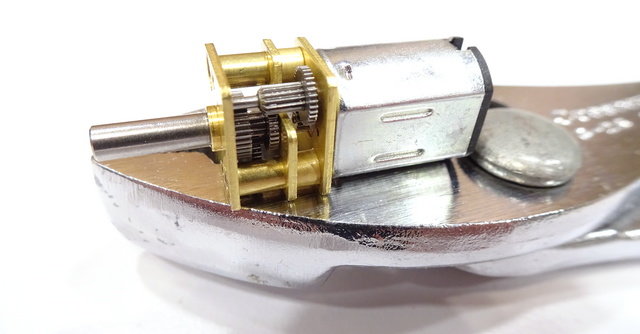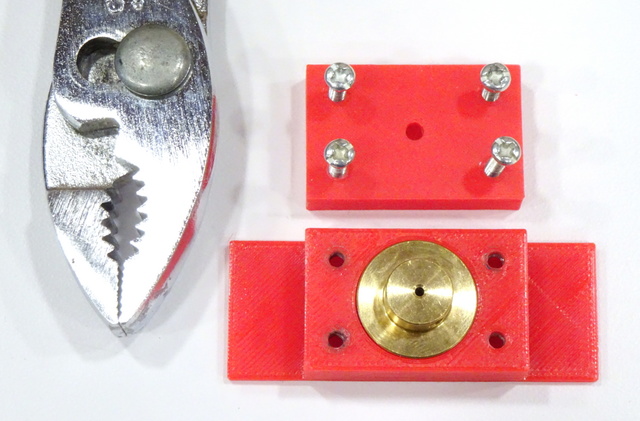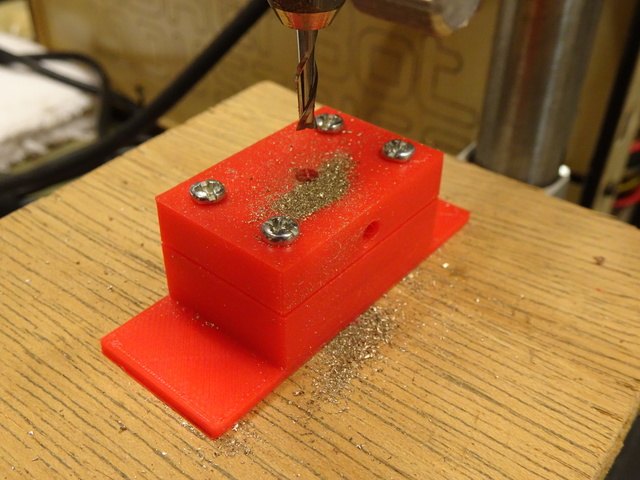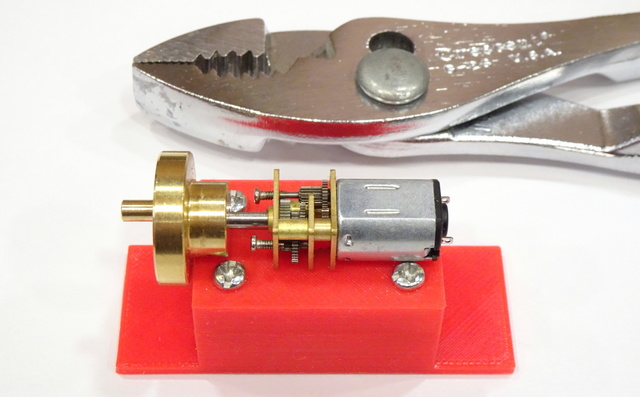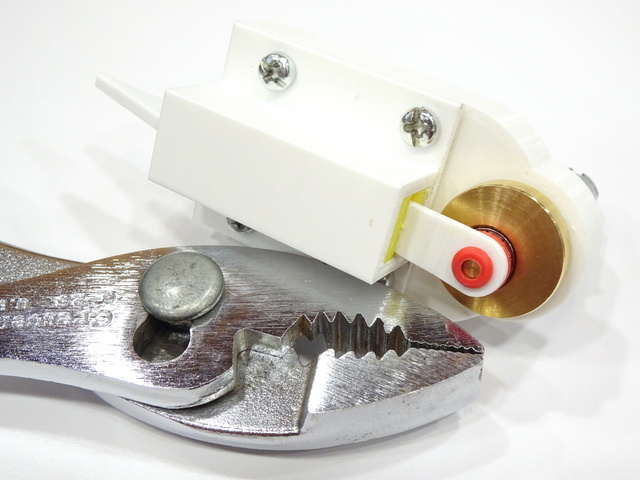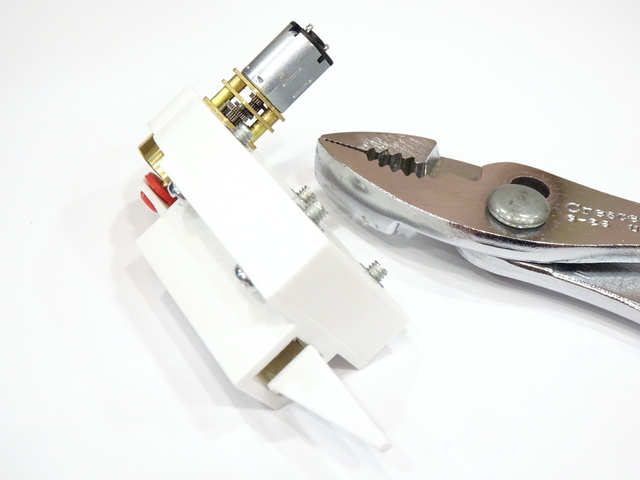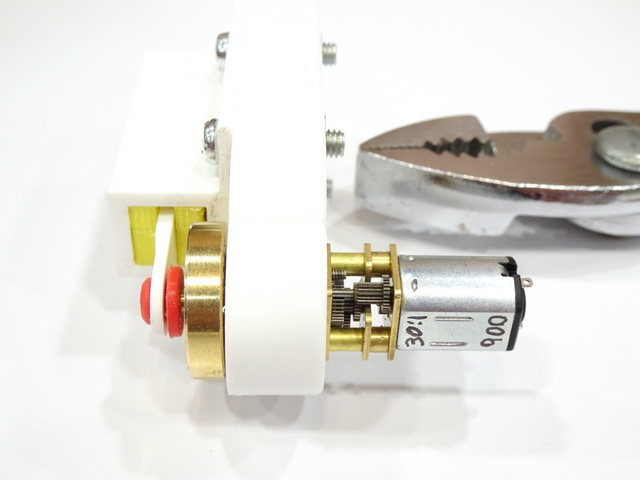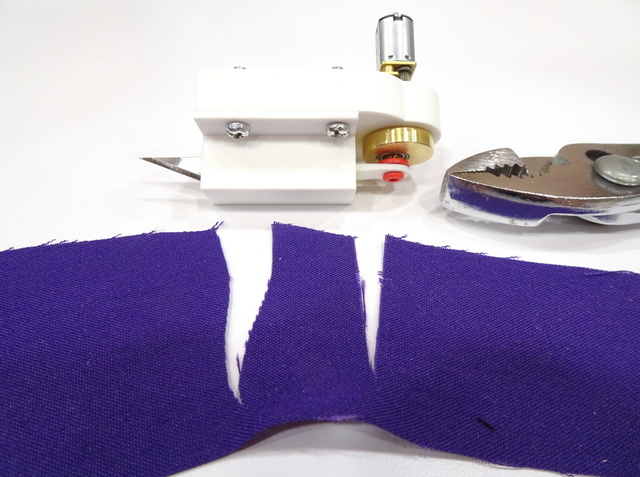The previous cutterhead prototype from about a year ago that used a tattoo gun motor reciprocated the blade at a high speed and cut the fabric well, but stalled easily in the foam spoilboard. I needed more torque and I was hoping I could get by with less speed.
And now I remember how I stumbled across the idea to use a tattoo gun motor — Nick Poole’s SparkFun post on building a tattoo gun from one of their cute widdle gearmotors, which are available in a wide range of gear ratios and output speeds. So when the tattoo motor didn’t have enough torque, I ordered two different speeds of the micro gearmotors from SparkFun, following Nick’s path of innovation.
For the crank to transfer power from the motor to the connecting rod, I’m not going to beat the convenience or price of the tattoo “cam” with the bearing and pin already in it — that’s exactly the type of commodity component I’m hoping to be able to use. So I ordered a couple more of those, bearing in mind a caveat — these “cams” are made for tattoo-motor 1.4-mm shafts and my gearmotors have 3-mm shafts. A little drilling was in order; so I ordered a 3-mm end mill because flat-bottomed hole, you make the cutter cam go ’round.
Not being a machinist, I don’t have cool tools for work-holding, so I printed an enclosure to increase the odds of actually drilling the brass cam.
I’d have liked to clamp it down; but even having this to keep my fingers away from the bit worked out quite well. I got it drilled this weekend; Dremel drill press FTW.
Fitted together, it looks like a tiny model of some steam-era mechanism.
With the “cam” prepared, I next had to model and print a new motor mount.
These shots turned out so nicely, I can’t choose,
so I’ll just use all of them.
Predictably, this version had the opposite problem from the ungeared tattoo motor. It showed no inclination to stall in the foam spoilboard; but the blade was moving slowly enough that it wouldn’t cut its way in from the edge of the fabric — I had to put tension on the fabric and make a plunge cut to get started — and the fabric tended to cling to the blade, oscillate with it, and push in front of it.
Looks like I should try a gearmotor with a lower gear reduction and a faster output — the fact that I got a super-easy cut with the tattoo motor and I got no proclivity to stall with this gearmotor means there’s still a chance there’s a sweet spot between the two. Unfortunately the 900-RPM motor that I tried was the faster of the two I’d ordered; the 4900-RPM motor that Nick used is sold out at SparkFun and I can’t find it on Amazon; and the 2700-RPM (next fastest) motor from SparkFun would cost me about $25 with shipping, sigh. So I’ve ordered a 4000-RPM motor from AliExpress, which should be here in a couple of months. It should be the same form factor as the one I tried this weekend; so when it arrives, I should be able to swap it right in without having to update the case design.
I’m also thinking about an electric toothbrush motor. Although it vibrates rather than reciprocates, I think it has a fair chance of getting the blade to cut due simply to the speed at which it will move. It’s worth a try; and I’ve ordered one whose Amazon listing boasts that “friends to feel can only buy” and “material thick.”
